
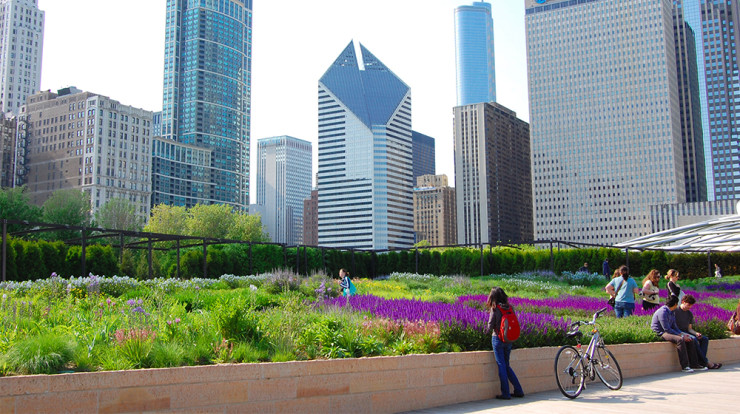
Features
Embracing the Ecological Perspective
Allison Bernett
Share
Learn more about our Phoebe work and services by emailing us at [email protected]. Follow the conversation on twitter: @TerrapinBG | #PhoebeFramework
This post is part of an ongoing series discussing the foundations and theory of Terrapin’s Framework for an Ecological Built Environment (Phoebe). Phoebe is a suite of tools that use ecosystem-based assessment to evaluate and improve the built environment. Phoebe merges sustainable design with environmental planning, industrial ecology, and restoration ecology. Its aspiration is to reconcile ecosystem dynamics and contemporary environmental pressures with human-dominated environments. These articles explore the ways these fields interact within the context of the thought process and goals of Phoebe.
When we try to pick out anything by itself, we find it hitched to everything else in the Universe.” — John Muir
One of my favorite places to be on sunny day in New York City is strolling through the shaded lawns and winding paths of Central Park. After moving to the Big Apple from a small town in Colorado, I find myself craving the greenery. On days like those, I truly appreciate the foresight of Frederick Law Olmsted and Calvert Vaux to create such a masterpiece of landscape architecture smack in the middle of Manhattan. As Anne Whiston Spirn points out, people are often surprised to find that Central Park was constructed.1 To Olmsted’s credit (or as Sprin would argue to the detriment of his legacy), the park is so well executed that many assume it is a pristine remnant of “nature” as it was before the city. This and other impressive works such as Boston’s Fens and Riverway by Olmsted call into question our concept of “nature.”
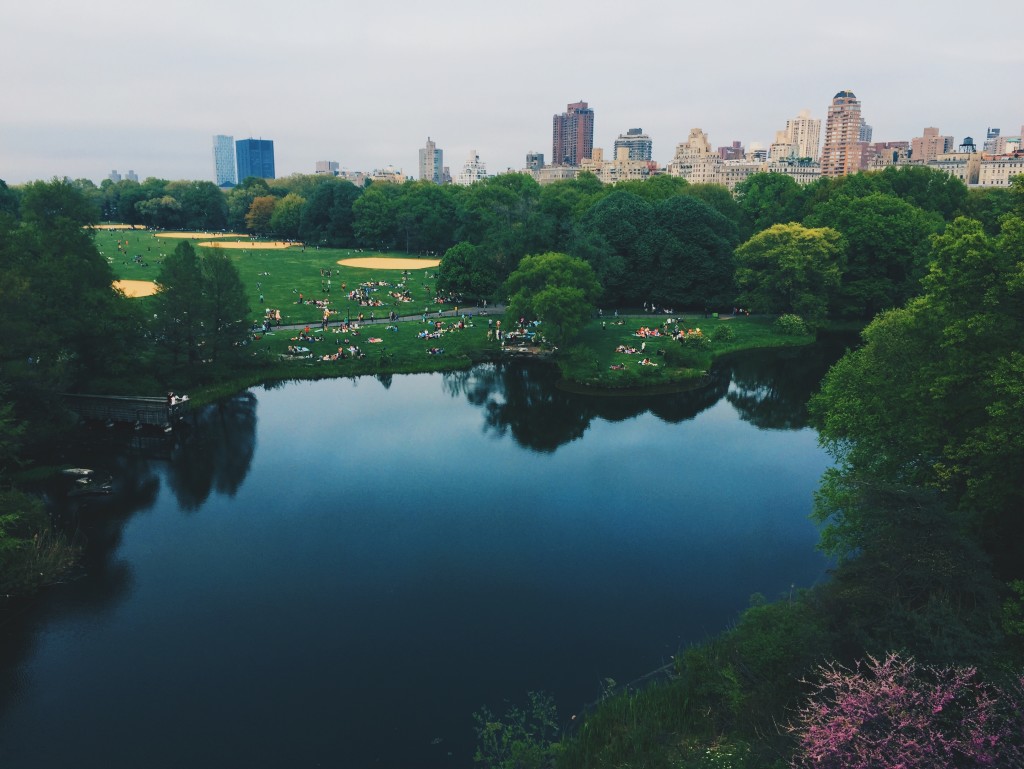
Although it appears like a pristine swath of natural landscape, Central Park in New York City was actually designed by Olmsted and Vaux in the 1800s.
Natural or Man-Made?
Nature is a tricky concept to grapple with, most especially because its definition is heavily influenced by our culture and values.2 If we define nature in the traditional sense, it means anything in the physical world excluding humans and our creations, establishing a harsh dichotomy between “natural” and “man-made.” In this view, features like Central Park become problematic: the landscape may have been constructed, but the flora and fauna that flourish within them cannot be considered human creations. Furthermore, does that fauna include humans? In biological terms, humans are highly intelligent animals, as much a product of nature as honeybees. And if humans are a part of nature, then aren’t our creations such as the buildings of New York just as natural as beehives? Does anything separate “man-made” from “natural”?
For many, the term “nature” implies a pristine, undisturbed state—a definition that inherently excludes our disruptive human activities. However, natural ecosystems are always in flux, subject to endless disturbances, or pressures, that in part give rise to the brilliant process of evolution. In ecology, there is a term for organisms that significantly alter their ecosystems: ecosystem engineer. Think of beavers and how their log dams drastically change the flow of rivers, creating ponds and new habitats. As Sonali pointed out in her earlier post on restoration ecology, humans are ecosystem engineers on a massive scale. We remain a part of the ecosystem no matter how much we alter it.
Symbionts
If humans are ecosystem engineers, then cities are the ultimate expression of our ecosystem engineering, concentrating vast amounts of ecological resources and energy onto tiny land areas. Cities fundamentally alter the landscape, hydrology, microclimate, geochemical cycles, and species distribution. Their influence (both positive and negative) can be felt throughout the regions they occupy and beyond. For example, to sustain Vancouver, the city actually requires 180 times more land than the area it occupies.3 This example also demonstrates how cities are extremely dependent on surrounding rural and wild ecosystems. Ecosystems provide food, clean air, timber, filtered water, soil formation, and many more precious services that cities require. Over 8 million people in New York City rely daily on a pristine swath of forested land in the Catskills to provide them with clean drinking water at a much lower cost than a water filtration plant. Humans and our cities are intricately interdependent on the “natural” environment. We are symbionts with surrounding ecosystems.
We are symbionts with surrounding ecosystems.”
Yet there has been a persistent and dangerous notion in society that nature and humans are separate entities and, consequently, that nature can be controlled and exploited with no deleterious side-effects on humans. This perspective has led to an indifference to ecosystems in design and planning. Many modern cities are poorly adapted to their ecological surroundings, instead prioritizing aesthetics, efficiency, or cheap and easy construction over supporting essential ecosystem processes. We’ve channelized rivers, drained lowlands, and razed forests to provide for our developments with little regard for the consequences. Especially with the rapid development of the industrial revolution thanks to cheap and plentiful fossil fuels, we’ve had little incentive to respect the surrounding environment.
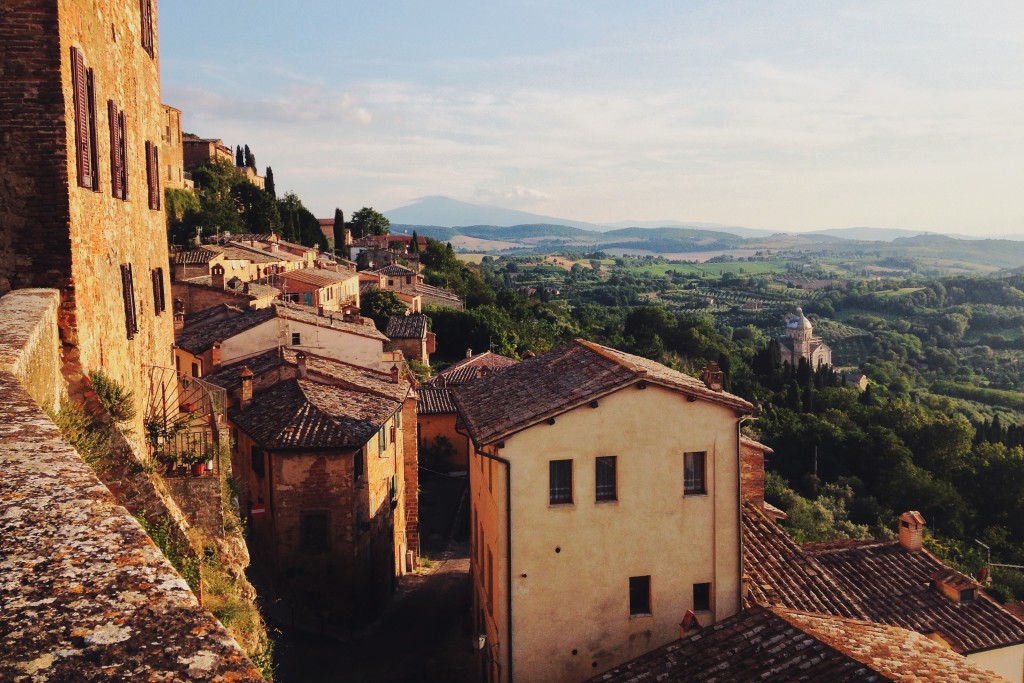
Historically, towns and villages like Montepulciano, Italy were much more connected to the land through necessity. The surrounding fields produced food for the town and refuse from the town fertilized the fields. With industrialization, growth and migration to the cities from rural areas, cities have become disconnected from the surrounding ecosystems.
Ecology in Cities
In tandem with this indifference toward nature, our appreciation of urban nature is also skewed: we love manicured parks, tidy gardens, constructed ponds, and clipped lawns (anything within our control), but abhor fringe landscapes and urban wildlife such as vacant lots, marshlands, cockroaches, and raccoons (all out of our controlled). The “controlled” landscapes provide invaluable services such as recreational spots, urban heat island reduction, storm water management (if constructed properly) and biophilic respites from urban environments that support our health and wellbeing, but are typically unhealthy in ecological terms, being mostly removed from ecological processes. They lack biodiversity, provide little habitat for wildlife, and require high inputs of energy, water, and fertilizer to maintain, making them costly enterprises for cities to support. In contrast, the fringe landscapes and urban wildlife are generally in good ecological health because they have successfully adapted to the altered natural processes within cities. Vacant lots filled with trash and poisonous residues still abound with biodiversity and are resilient to disturbance.4 Undesirable marshlands, especially coastal salt marshes, provide habitat for migratory birds and fisheries that support a healthy ocean ecosystem. Urban wildlife such as the cockroach or raccoon are actually quite remarkable species for their resilience to harsh urban ecosystems. However, these “uncontrolled” flora and fauna provide little recreational or cultural value and can detrimentally affect human health and safety. Neither the controlled nor uncontrolled flora and fauna provide the optimal value to humans and urban ecosystems.
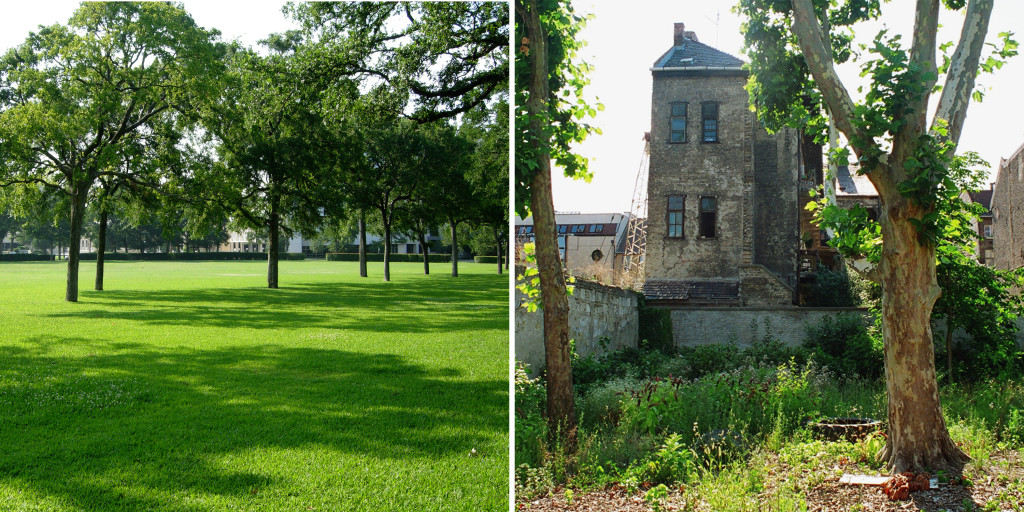
Typical urban landscapes: The left image shows a high-maintenance, low biodiverse landscape that provides aesthetic value, while the right image shows a biodiverse, resilient vacant lot with little cultural value to humans. Neither landscape provides both ecological and cultural benefits for a healthy urban ecosystem. Left image copyright Jeff Stvan/Flickr; Right image copyright habeebee/Flickr.
Luckily, we can take the best of both worlds to create culturally valuable and ecologically healthy landscapes. Strategic design can transform parks, gardens, and water features into more ecologically healthy, resilient, and low-maintenance plots than the fringe landscapes, while still retaining their recreational and aesthetic features that we cherish. Each urban landscape is an opportunity to provide multiple benefits that strengthen the urban ecosystem. Less trafficked urban parks could be managed using forestry techniques to support low-maintenance naturalized plots. Riverfront parks could be designed with large riparian buffers and lowlands to mitigate flooding, reduce water pollution, and create habitat. Typical greenroofs on buildings already mitigate urban heat island effects and retain stormwater, but they could be planted with flowers and fruiting shrubs for migrating birds and pollinators, stitching together networks of habitat across cities and creating beautiful biophilic spectacles. Highway median and shoulders could be planted with biofuel crops instead of bluegrass.
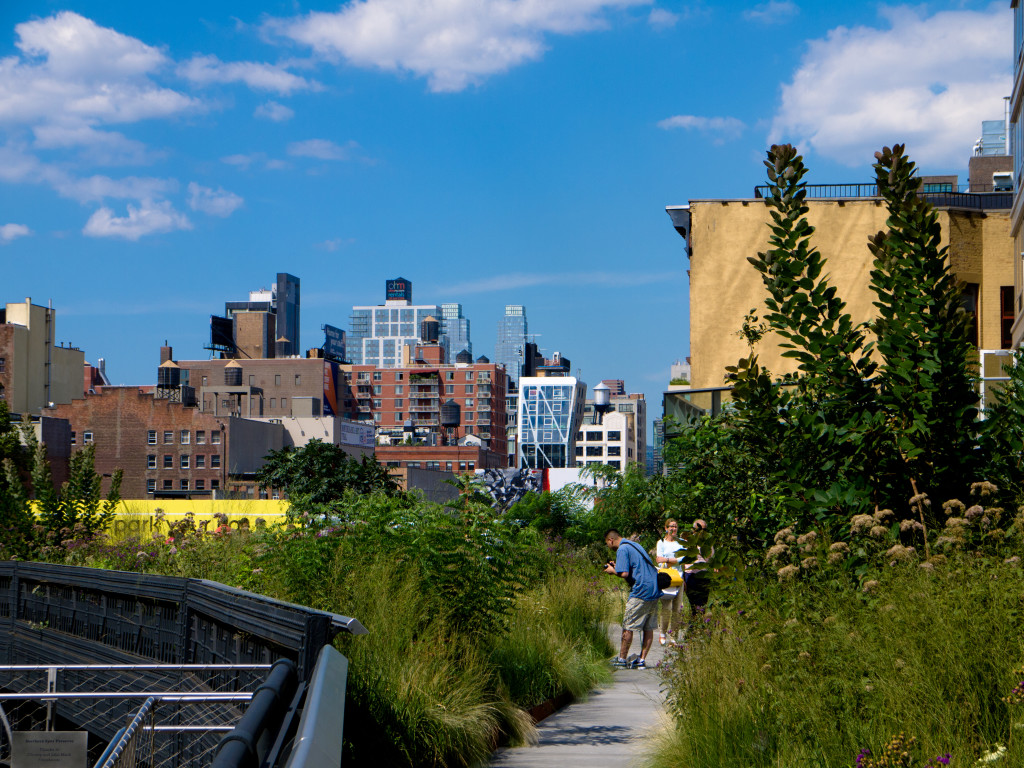
The Highline Park in New York City provides both ecological and cultural value. The designers converted a disused raised railroad track into a highly popular destination. The planting scheme was inspired by the self-seeding plant community that had developed on the tracks pre-development, and many of the original plants were incorporated into the landscaping. Image copyright Anders/Flickr.
Social Ecology
While improving the ecology in cities, we can’t forget a crucial component of all cities: the people. Social ecology plays a huge role in shaping cities, and we must strive to improve these systems in conjunction with other ecological processes. Terrapin coauthored a report with Community Solutions on the Tilden Towers in Brownsville, Brooklyn, advocating for a redevelopment of the superblock. Although reducing the environmental footprint of the development is a major goal, the utmost priority of the project is to increase Brownsville’s social resilience and quality of life. The team felt the social isolation, poor health, and declining safety of the residents must be reversed so that residents can take ownership of their public spaces and drive change in the neighborhood. Retrofits, new landscaping, new mixed income residential units, and an activated street with new ground floor retail will hopefully forge a stronger social network across the neighborhood, compounding the effects of the redevelopment. Integrating the needs of social systems and human health into urban ecological planning will ensure that interventions have maximum impact for truly sustainable and resilient cities.
Emulating Biological Ecosystems
Ecological thinking can also translate to our built systems and industrial processes. Buildings, infrastructure, agriculture, and industrial manufacturing parallel biological ecosystems in that they have energy and resource inputs and outputs, rely on upstream activities, create downstream impacts, and are subject to external pressures. Analyzing our built systems as biological ecosystems reveals many opportunities for improvement. For instance, most biological ecosystems function completely off of direct solar energy, not stored fossil fuels, forcing organisms to be extremely frugal energy users. Biological ecosystems are also in constant flux, continuously adapting to pressures like changing seasons, wildfires, or flooding. “Waste” does not exist in biological ecosystems: nutrients are constantly exchanged between organisms. Emulating this nutrient exchange, several industrial plants in the city of Kalundborg, Denmark have set up a series of such exchanges for huge environmental and financial savings. If we optimized our systems based off of lessons learned from ecosystems, we would drastically cut resource demand, energy use, and waste streams for huge environmental, economic, and social benefits, and better respond to disturbances like climate change, demographic shifts, and land use changes.
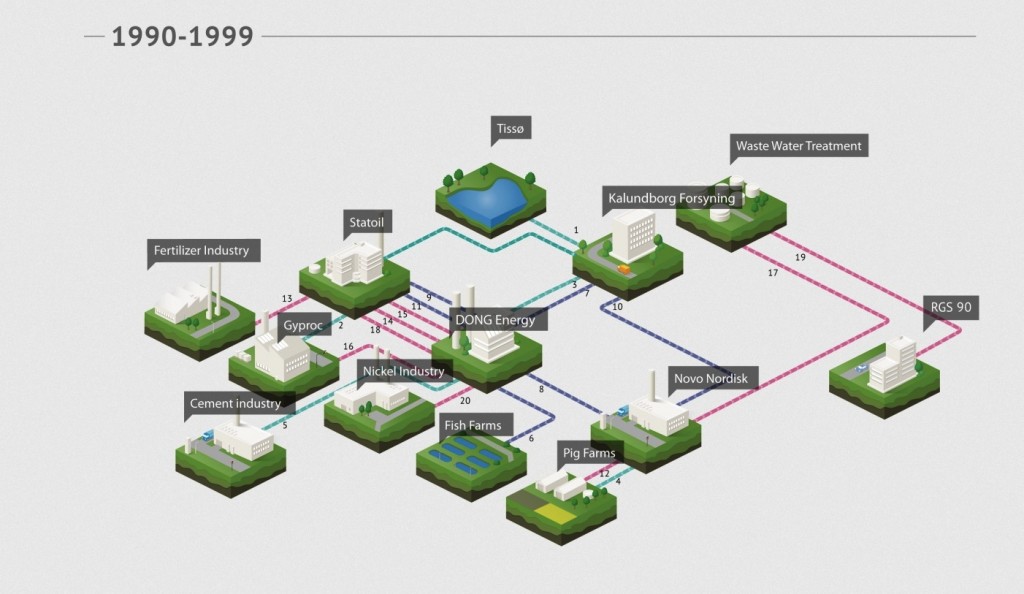
The exchanges of by-products, heat, energy and water between industrial and agricultural partners in the Kalundborg Industrial Symbiosis saves an estimated 275,000 tons of CO2 emissions, 3 million m3 of water, and $15 million annually. Image copyright Kalundborg Symbiosis.
New Perspective, New Priorities
Ultimately, what we must do is prioritize ecosystem health and functioning in our planning and design goals. If we accept that cities play host to local ecosystems and are inextricably interdependent on regional ecosystems, if we shift our perspective to view humans and our built systems as integral parts of nature, then how does that change our design priorities and decision-making? How might we alter our definitions of what is “sustainable” and “resilient”? How might we calibrate existing green building guidelines and codes?
If we shift our perspective to view humans and our built systems as integral parts of nature, then how does that change our design priorities and decision-making?”
In this ecological view, a building is not an isolated object bounded by a lot line, but a node with the human ecosystem. A riverfront park is not just a popular recreational spot, but a restored fishery, stormwater buffer, and biophilic respite. A lively neighborhood is a resilient social unit that strengthens the whole socio-economic vitality of the city. Such a perspective not only casts our built systems in a different light, but it enables us to identify the most beneficial design opportunities for the site, community, and region. If we consciously align with and learn from the remarkable ecosystems that we are a part of, we can begin to create healthy, prosperous, and regenerative built systems. We must adapt our built environment to thrive within the natural environment for mutual advantage.
*The header image is of Lurie Garden in Millienium Park, Chicago. A majority of the plants in the garden are natives, making for a healthy and less water intensive habitat for wildlife. Image copyright SnapDoc/Flickr.
References:
- Spirn, Anne Whiston, “Constructing Nature: The Legacy of Frederick Law Olmsted.” Ed. William Cronon. Uncommon Ground: Toward Reinventing Nature. New York: Norton, 1995. Print.
- Cronon, William. Uncommon Ground: Toward Reinventing Nature. New York: Norton, 1995. Print.
- Pickett, Steward TA, et al. “Urban Ecological Systems: Linking Terrestrial Ecological, Physical, and Socioeconomic Components of Metropolitan Areas.”Urban Ecology. Springer US, 2008. 99-122.
- Hough, Michael. Cities & Natural Processes: A Basis for Sustainability. 2nd Ed. London: Routledge, 2004. Print.
Filed under:
Allison Bernett
Allison Bernett is an associate project manager and the public relations coordinator for Terrapin Bright Green. She graduated summa cum laude from Washington University in St. Louis with a double major in architecture and biology. Allison’s interests focus on architecture, sustainability, and bioinspired innovation.
Topics
- Environmental Values
- Speaking
- LEED
- Terrapin Team
- Phoebe
- Community Development
- Greenbuild
- Technology
- Biophilic Design Interactive
- Catie Ryan
- Spanish
- Hebrew
- French
- Portuguese
- Publications
- Occupant Comfort
- Materials Science
- Conference
- Psychoacoustics
- Education
- Workshop
- Mass Timber
- Transit
- Carbon Strategy
- connection with natural materials
- interior design
- inspirational hero
- biophilia
- economics of biophilia
- Sustainability
- wood
- case studies
- Systems Integration
- Biophilic Design
- Commercial
- Net Zero
- Resorts & Hospitality
- Energy Utilization
- Water Management
- Corporations and Institutions
- Institutional
- Ecosystem Science
- Green Guidelines
- Profitability
- Climate Resiliency
- Health & Wellbeing
- Indoor Environmental Quality
- Building Performance
- Bioinspired Innovation
- Biodiversity
- Residential
- Master Planning
- Architects and Designers
- Developers and Building Owners
- Governments and NGOs
- Urban Design
- Product Development
- Original Research
- Manufacturing
- Industrial Ecology
- Resource Management
- Sustainability Plans
- Health Care
- Carbon Neutrality


